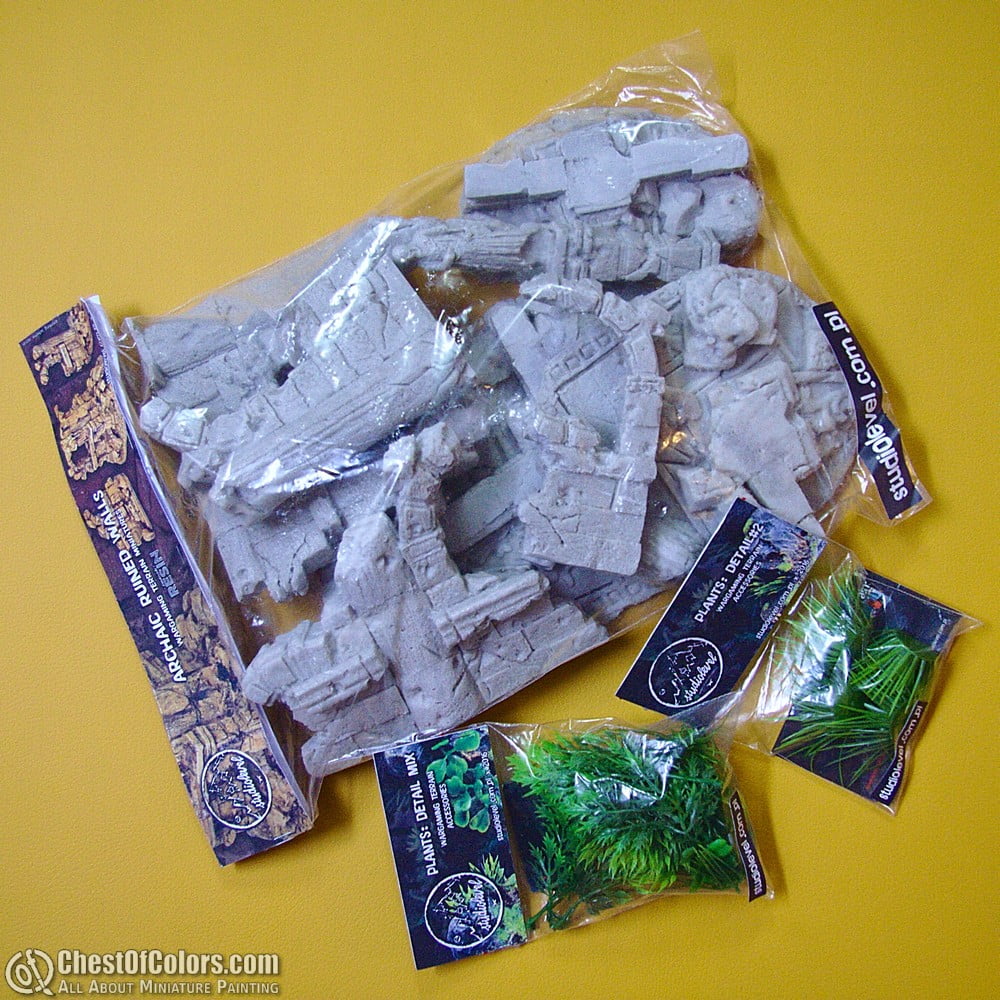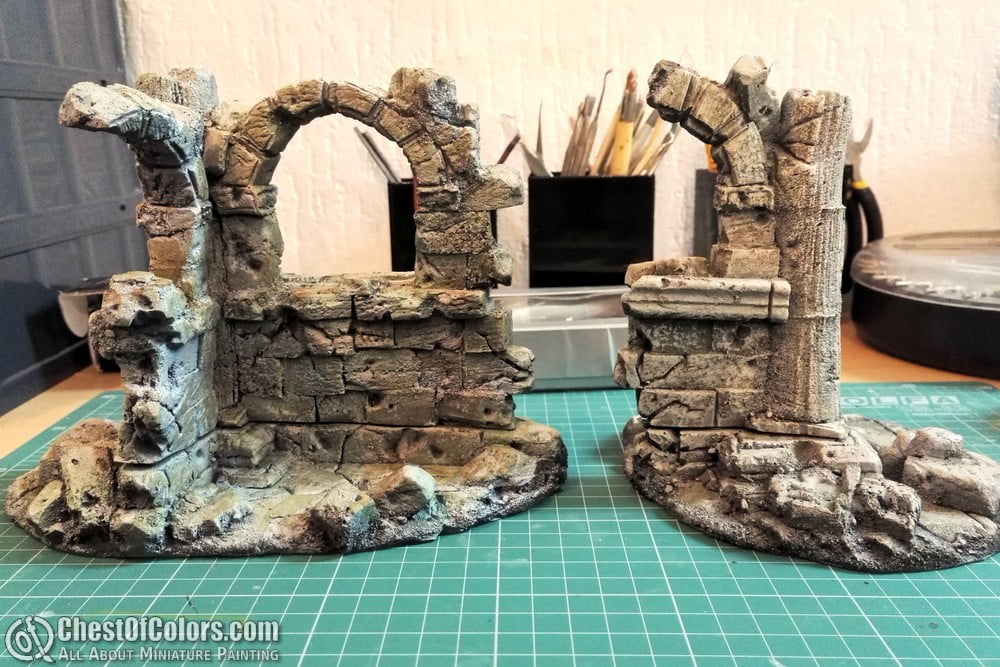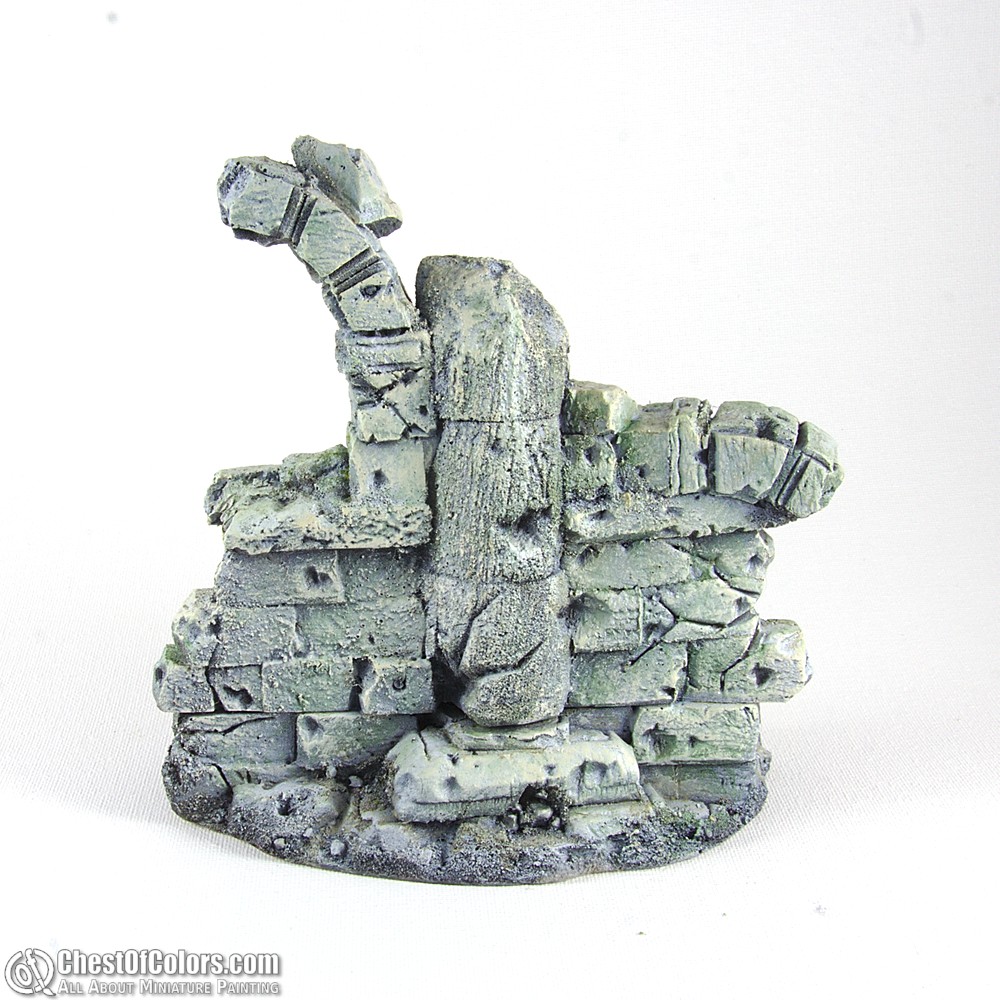Here is my first painted piece from NEW Bantam Alley I Wargames Resin Bits & Terrain Kickstarter. I did not expect that painting a couple of rusted barrels can be so pleasant 🙂
On the last picture I placed 32mm miniature for scale. A human sized figure can really hide behind these barrels.

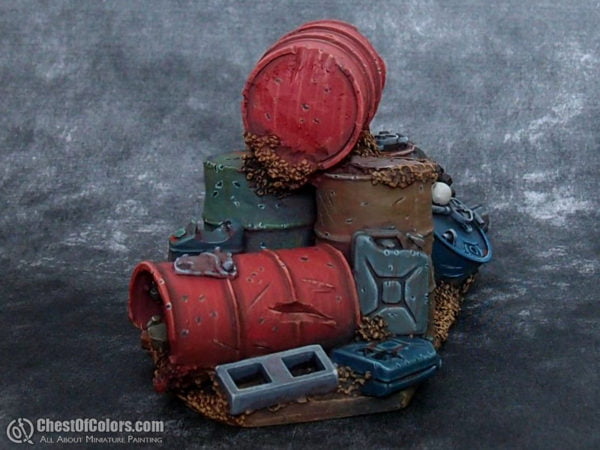


Bantam Alley Wargames Resin Bits & Terrain – review
I was given an opportunity to write a few words about products from NEW Bantam Alley I Wargames Resin Bits & Terrain Kickstarter. It is launched by StudioLevel – a Polish company which already have quite a lot of cool diorama elements (mostly fantasy ruins).
The products offered on Kickstarter are 28-32mm finest quality handmade resin casts in post-apocalyptic and industrial theme. They include such cool stuff like detailed technical plates, hatches, barrels, furniture or even whole ready for painting scenery!

(click to see bigger photo)
On the basis of items I received I can say that StudioLevel have done a wonderful job. Items are made of dark, high quality resin and I found no air bubbles or casting imperfections. I am really impressed with their casting quality. They need only a minimal amount of work before painting. This stuff should be great addition to any diorama or scenic base. Let’s have a closer look at individual items:
Wrecked Hummer – there is really tons of details to be painted:


Barricade – another detailed diorama element:


Barrels – even trashed barrels can look cool:


Large engine:

Large electric boxes:

Bottle crates (and small electric boxes):

Round hatches (40mm to 20mm diameter):

Small square panels (average 20x30mm in size):

Large panels measuring from 110x110mm to 60x60mm:
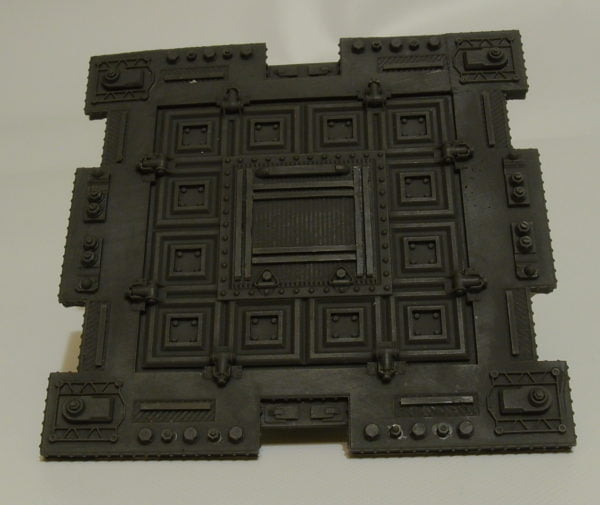


Items that I received for this review are only a small selection of all the available pieces that are offered on Kickstarter. If you want to acquire some really great items for wargaming or to diversify your diorama or figure bases, you can give your support for Bantam Alley KS. If you are more of a gamer than painter, you can even buy painted versions of these products.
I am going to use this stuff on diorama for Fallout: Wasteland Warfare which I hope to receive in a couple of months. Of course I am not going to wait that long with painting of these wonderfull items, so expect painted samples here in the following days.
StudioLevel terrain review
Some time ago we’ve been contacted by StudioLevel and asked if we could do a review of their products. We hadn’t seen them until the moment we received our samples, so it was a completely new product for us. We knew it from the advertising materials but getting a first-hand opinion was more important as their models looked pretty interesting on the website. Now they even have some promotional video clips, which you can see just below this paragraph, but at the moment of our testing these were not available yet. Long story short, we received one model set and two plants sets from them for testing and reviewing.
The products are quite obviously aimed at wargamers, and many of them will find these items pretty interesting. They can be used to make their tabletop battlefields look much more interesting with just minor effort.

StudioLevel Terrain wanted to know if their products can be of interest to miniature painters and modelers. If you’re looking for a brief answer, without all the details provided below, the answer is: yes, but only to some degree.
What we received
The samples that we received from SLT were: 1 set of “Archaic Ruined Walls”, 1 set of “Plants: Detail Mix” and 1 set of “Plants: Detail #2”. The products were packaged in plastic bags with paper labels. There was enough information on the labels, like addresses, explanations and some basic instructions. Not that these were really necessary.
The walls set was the most interesting to me, while the two plants sets left me pretty indifferent. So as these seem to be of really minor interest to me as a painter or diorama maker, I will address the last two only shortly.

Plants mixes
I couldn’t find these in StudioLevel’s catalogue, so I was unable to check how much do these cost. Eventually we were informed these are simply free bonus packs, which are not meant to be sold separately. While they are a cool freebie, I doubt they would make good standalone products. Why?
I assume most of you have have found your own ways to deal with the subject of vegetation/plants on your models. These can range from using smaller specimens of real plants, through plants made for train dioramas or toys, to aquarium plants. And aquarium plants are exactly what you find in these sets.
I don’t know about you, but I have easy access to fishkeeping stores, in which I can easily buy larger plants which can be divided into smaller ones or larger packs of smaller plants. While maybe not dirt cheap, these don’t really cost so much that it would be too expensive to pay like €8 or equivalent to have a nice supply of plants. I myself had bought two larger plants to split them into smaller chunks and have more than enough than I need to cover my tabletop for gaming.
Why should I buy these plants packs from StudioLevel Terrain is a bit unclear to me. Maybe if I didn’t know the alternative or source of these plants, was really low on storage space, or really low on money? But I cannot ever see myself purchasing any of these sets, especially that they have some more interesting and better detailed plants in their catalogue.
Additionally the quality of these plants and the way they are made makes them insufficient for any more serious modeling tasks beyond tabletop gaming. While they may be a great way to make your battlefield green, I don’t think you would consider them good enough for your miniatures or dioramas, but your mileage may vary. Our packs were enthusiastically received by our very own Balrog, now a miniature gamer (and painter) who happily added them to his own terrain collection!

So are they something with no potential? No, they just need to be slightly adjusted depending on their purpose. If they are to remain promotional/bonus freebies, I would clearly mark them as such. And if they are to be sold, I think they don’t make a very good standalone product but can be a part of interesting mixed packs, like a small pack of one tree, one bush and a few of these plastic plants, larger pack with several of each and a large pack with enough plants to cover a small tabletop battlefield. Even if not of real interest to painters or modelers, such pack might be cool for gamers who could easily make their battlefields green and full of cover.
The more interesting thing is definitely the Ancient Ruined Walls set, which I am going to review now.
Ancient Ruined Walls
This set looks is priced at €68 and looks very cool on promo materials and I must admit it can really easily be turned into an interesting (and pretty large) terrain piece even with minimal skills and effort. But what if your skills are much higher and you really want to put some serious effort into turning it into a breathtaking diorama centerpiece terrain? Well, I am not sure if this is the best choice. Why? Let me explain.
As you can see there are quite a few elements in the pack. Just enough to build three walls and one pillar/column with a statue on top. Yes, they may look good from distance and can surely look good from close up. Unfortunately I think you will have to put some work into concealing some shortcuts taken by the sculptor.
See the photos below for some additional comments.
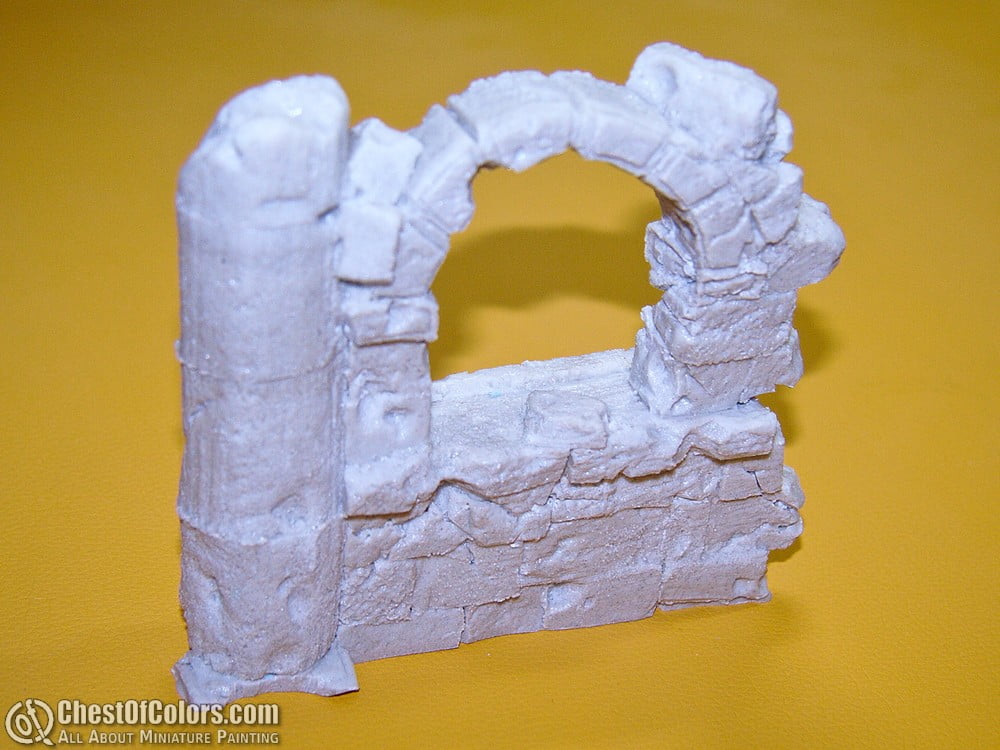


I am not any kind of expert in casting and resin, but the kind of resin used here was not the one I was used to working with. It felt rough, like there was a lot of filler in it. I can’t tell if this was the case or was it caused by any different factors, but the result was that working with it was less comfortable than I expected. It was not particularly difficult or annoying, but simply less fun than I expected it to be. It was partially balanced by the nice design and some details of the sculpts, but this first problem bothered me until I was about halfway done with the models.
The details, while quite plentiful, were not always clear and sharp enough (check the closeups to see what I mean). Or maybe I should say: they were soft where I would expect sharp, and sharp where I would expect smooth.
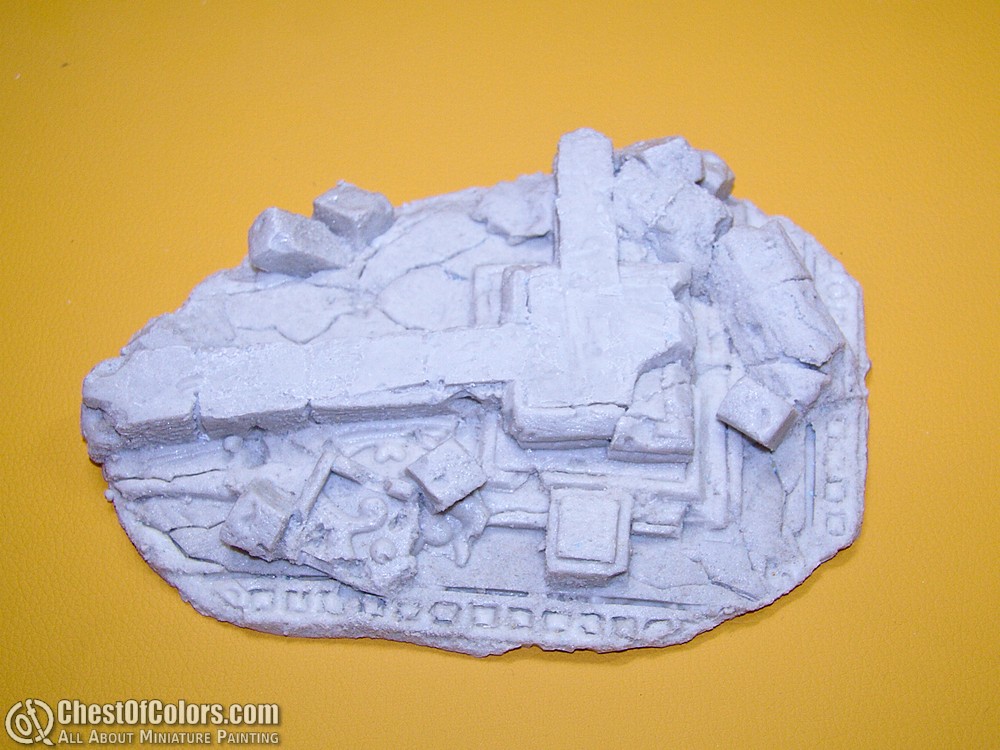

For example check the stone blocks on the photos – most of them have very sharp edges, as if they were precisely cut (with a laser, or maybe a modeling knife through XPS) but basing my expectations on the title of “Ancient Ruined Walls” I thought these should look different. Just check the ancient pyramids and temples – their stones have been already worn by sand, wind, rain, etc. They’re no longer sharp, but more softer-edged. And on the other hand, some damage, cracks and breaks in the stones look much softer than they should in my opinion. They don’t look like broken stone slabs but more like butter, putty or styrofoam pressed by some kind of sculpting tool. Depending on how fresh the damage is, these lines could be sharper to some degree.

Now while details like these may be irrelevant for a wargamer, they may be significant for some model builders. When you put multiple hours into your model or diorama (and hundreds of hours are not uncommon) you want to avoid such inconsistencies. And while these are more of ‘internal logic’ shortcomings, there were two things I really disliked.
Maybe they were just my personal preferences, or maybe just traits of my particular copy of the model, but that’s something that bugged me for a serious part of the process. And both of these issues can be collectively addressed as “roughness” or “graininess” of the model. Maybe it’s the casting or maybe it’s the sculpt, but I found many parts of the model rough. Just as if it was covered with glue and then with pretty fine sand. I don’t think that this coarse finish served the model well. To me it just made painting less comfortable, but I am well aware that for many others it can be an advantage, which will make painting easier.
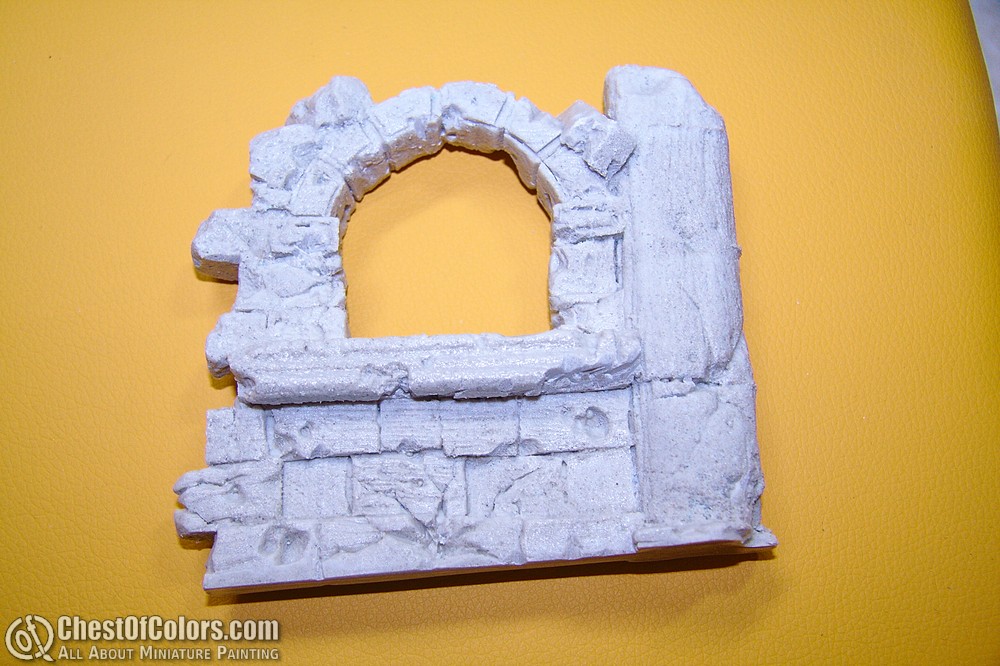
Let me explain – when you are painting the model with relatively wet brush, such rough details will break your smooth brushstrokes and maybe even damage your precious paintbrushes. On the other hand they may be a blessing for drybrushers. When painting with the drybrushing technique you usually use a harder brush, which will be more durable and also sharper details will be easier to pick by drybrushing. So if you intend to paint the models in this way, consider it well suited for drybrushing. When wetbrushing you may need to be more careful, or take it into account when preparing the model for painting.

This rough detailing also felt out of place on the statue. It seems to depict some human figure, possibly a knight of old. The features and details are not clear and look weathered and faded, which is great and adds a lot fo character to the model. But then some parts of the model feel sharp and rough again. Grainy, almost porous. Wait, are we really talking about something “ancient” and “ruined”? Have you seen old statues? They usually seem to be pretty soft-featured, smooth, and details are often gone already. Surfaces are weathered and almost polished by atmospheric conditions. And this model feels rough, pumice-like. No, it was no fun for me, but definitely much easier for drybrushing.
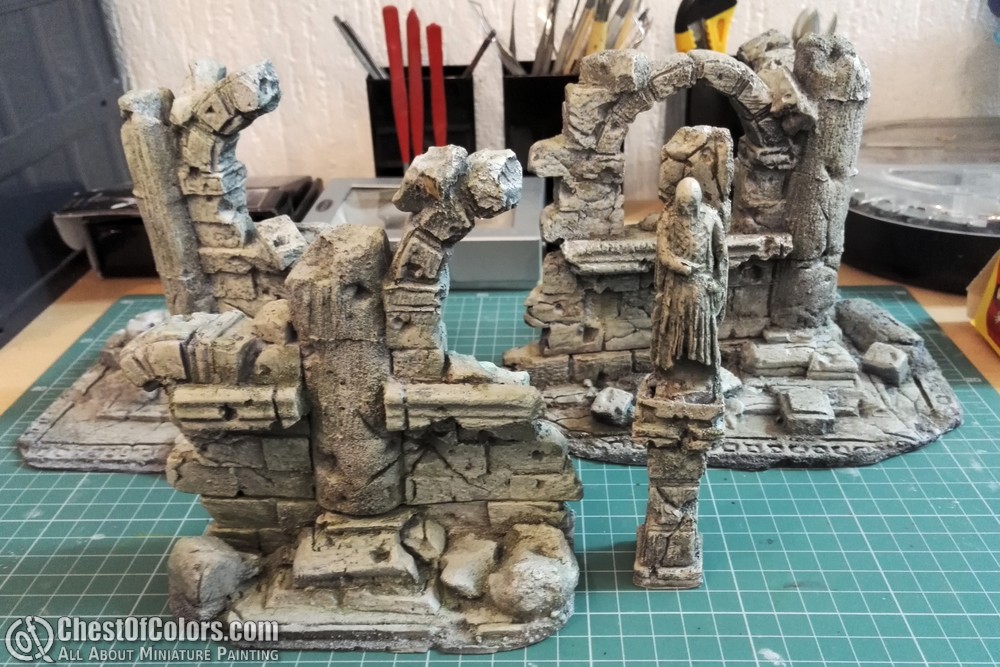
Fortunately I had somebody who would enjoy this kind of painting! Balrog was waiting anxiously for his participation in painting of these models, so as soon as I said “come on, son, let’s continue together” he couldn’t get any happier! 😀

These models were perfect to teach him shading and highlighting on really large models, with washes and drybrushing respectively. Then we even added some moss to make the ruins look even older and I am sure they will be used frequently in our battles, as he was absolutely impressed by these massive castle ruins and the mysterious statue. Also seeing how easily he could achieve relatively good effects on these models made him happy and confident in his skills. So if you want something good for painting with beginners, these sets may be a perfect choice.
I didn’t allow him to assemble the models, except for dry-fitting, because I don’t think allowing a kid of his age to play with toxic glues is a good idea. But even he managed to notice that the parts don’t fit perfectly together. They fit well enough, so there’s no real problems in assembling them at all, but making this review a honest one requires mentioning that all the connections required several consecutive applications of glue, as there were gaps large enough to need more glue than a clean joint would.


But there is an easy answer to this problem. You don’t even have to fill the gaps with putty. You can cover them with moss or grass! 🙂

My opinion
Now do I think these products are a good pick for a diorama builder or miniature painter? Well, it depends.
They wouldn’t be my first choice for sure, but I can easily find several groups of hobbyists who would be happy to choose them.
First of all they’re good for beginners and slightly more intermediate hobbyists. These will be satisfied with the level of detailing and quality of execution, and should be able to cope with assembling and painting with ease.
See how good these models can look with just some simple work from a boy like Balrog and his dad:



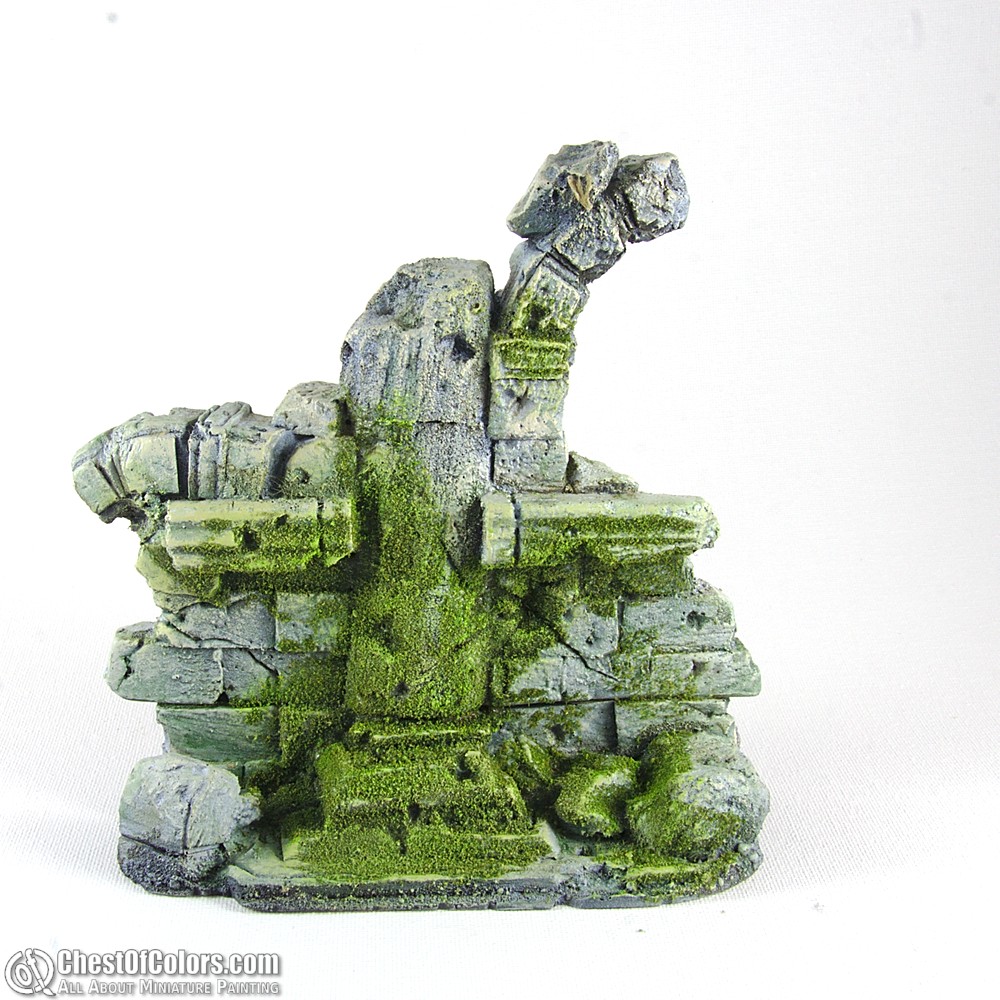

On the other hand use of these models by more experienced and demanding hobbyists would require some more involved work from them which might make these models less interesting for them. For example while a beginner might be fine with some gaps in his model, an advanced diorama maker wouldn’t allow it to stay this way, especially in places where it makes little sense. More experienced painters may also be less likely to drybrush their models than beginners, which would call for a smoother finish of surfaces than what I got with my model.
Possible uses
And what uses could there be for such models? Definitely the most obvious one is for wargaming. Wargamers will find these models more than satisfactory, easy to build and paint, and they would be a wonderful addition to any fantasy battlefield! Such models could also be incorporated as parts of dioramas (or large scenic bases), even of showcase quality if you are willing to do some work to overcome their shortcomings. Or maybe even become a more interesting version of photo background for one’s models?
We’ll try to show you how the ruin can be used for gaming or as a part of a photo setup, but that will be covered in a separate post.




